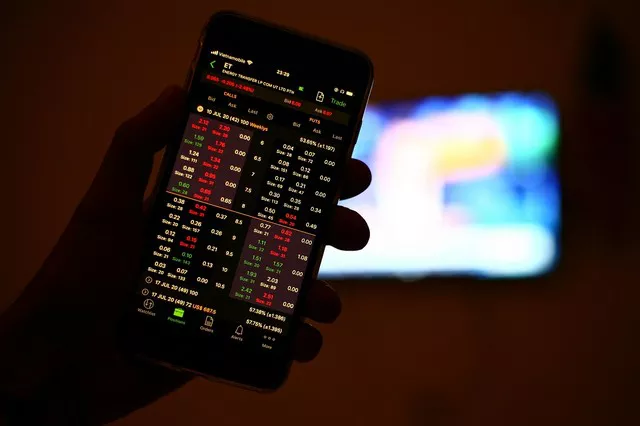Lumber futures, a derivative instrument representing the future price of lumber, have gained prominence in the financial markets as a unique commodity. As an essential material in construction and various industries, lumber is subject to market forces that present both challenges and opportunities for traders.
Understanding Lumber Futures: An Overview
Lumber futures are financial contracts that allow traders to speculate on the future price movements of lumber without owning the physical commodity. These contracts are standardized agreements traded on futures exchanges, providing a regulated and transparent marketplace for buyers and sellers. Lumber futures derive their value from the cash price of lumber, making them a popular choice for those seeking exposure to the lumber market or looking to hedge against price fluctuations.
Key Factors Influencing Lumber Prices: Supply and Demand Dynamics
Lumber prices are influenced by a combination of supply and demand factors. Changes in construction activity, housing markets, and economic conditions can impact the demand for lumber. On the supply side, factors such as forest management practices, weather conditions, and transportation costs play a crucial role. Traders in lumber futures must stay attuned to these fundamental drivers to make informed decisions about potential price movements.
Lumber Futures Contracts: Standardization and Specifications
Lumber futures contracts are standardized to ensure transparency and liquidity in the market. Each contract specifies the quantity of lumber, the grade and quality of the wood, the delivery location, and the expiration date. The standardization allows for easy comparison and trading of contracts on futures exchanges such as the Chicago Mercantile Exchange (CME). Understanding the specifications of lumber futures contracts is essential for effective participation in the market.
Market Participants: Hedgers, Speculators, and Producers
Various participants engage in trading lumber futures, each with distinct motives and strategies. Hedgers, such as lumber producers and consumers, use futures contracts to mitigate the risk of adverse price movements. Speculators, on the other hand, seek to profit from price fluctuations without a direct interest in the physical commodity. Understanding the diverse roles of market participants provides insight into market dynamics.
Market Hours and Trading Cycles: Navigating the Lumber Market
Lumber futures, like other commodities, follow specific trading hours and cycles. Traders should be aware of the regular market hours and the expiration cycles of lumber futures contracts. The expiration months vary, and traders may need to roll over positions to subsequent contracts to maintain exposure. Staying informed about these timelines is crucial for effective lumber futures trading.
Risk Management: Safeguarding Against Price Volatility
Effective risk management is paramount in lumber futures trading due to the inherent price volatility. Traders can employ various risk mitigation strategies, including setting stop-loss orders, diversifying portfolios, and using options to hedge against adverse price movements. Given the cyclical nature of the lumber market, understanding and managing risks is essential for long-term success in trading lumber futures.
Technical Analysis: Charting Lumber Futures Movements
Technical analysis is a valuable tool for traders seeking to analyze historical price data and identify potential trends in lumber futures. Chart patterns, technical indicators such as Moving Averages and Relative Strength Index (RSI), and trend analysis can aid in making informed trading decisions. Traders can use technical analysis to identify entry and exit points and gauge the strength of prevailing trends.
Fundamental Analysis: Gauging Market Fundamentals
In addition to technical analysis, fundamental factors play a significant role in shaping lumber prices. Traders must stay informed about macroeconomic indicators, housing market trends, and global economic conditions that impact lumber demand. Understanding the broader economic landscape provides context for interpreting price movements in lumber futures and making well-informed trading decisions.
Impact of External Factors: Weather, Tariffs, and Economic Trends
External factors can exert a substantial influence on lumber prices and, consequently, lumber futures. Weather conditions, such as wildfires or hurricanes, can disrupt the supply chain and impact lumber production. Trade tariffs and economic policies can also introduce uncertainties. Traders should be vigilant about monitoring these external factors to anticipate potential market shifts.
Choosing the Right Broker: Platform and Support
Selecting the right brokerage platform is a crucial decision for lumber futures traders. The chosen broker should offer a user-friendly trading platform, competitive commission structures, and robust customer support. Access to real-time data, research resources, and risk management tools enhances the trading experience. Traders should carefully evaluate brokerage options to align with their specific needs and preferences.
Continuous Learning: Adapting to Market Changes
Lumber futures trading is dynamic, and market conditions can evolve rapidly. Continuous learning and staying updated on market trends, trading strategies, and technological advancements are essential for long-term success. Engaging with online communities, forums, and educational resources can provide valuable insights and foster a collaborative learning environment for lumber futures traders.
Conclusion
Trading lumber futures offers a unique avenue for traders to participate in the dynamic lumber market, influenced by factors ranging from construction activity to global economic conditions. Navigating this market requires a combination of fundamental and technical analysis, effective risk management, and a well-defined trading plan. As traders embark on their lumber futures journey, staying informed, adapting to changing market conditions, and honing their skills will contribute to a successful and rewarding trading experience in this dynamic commodity market.


